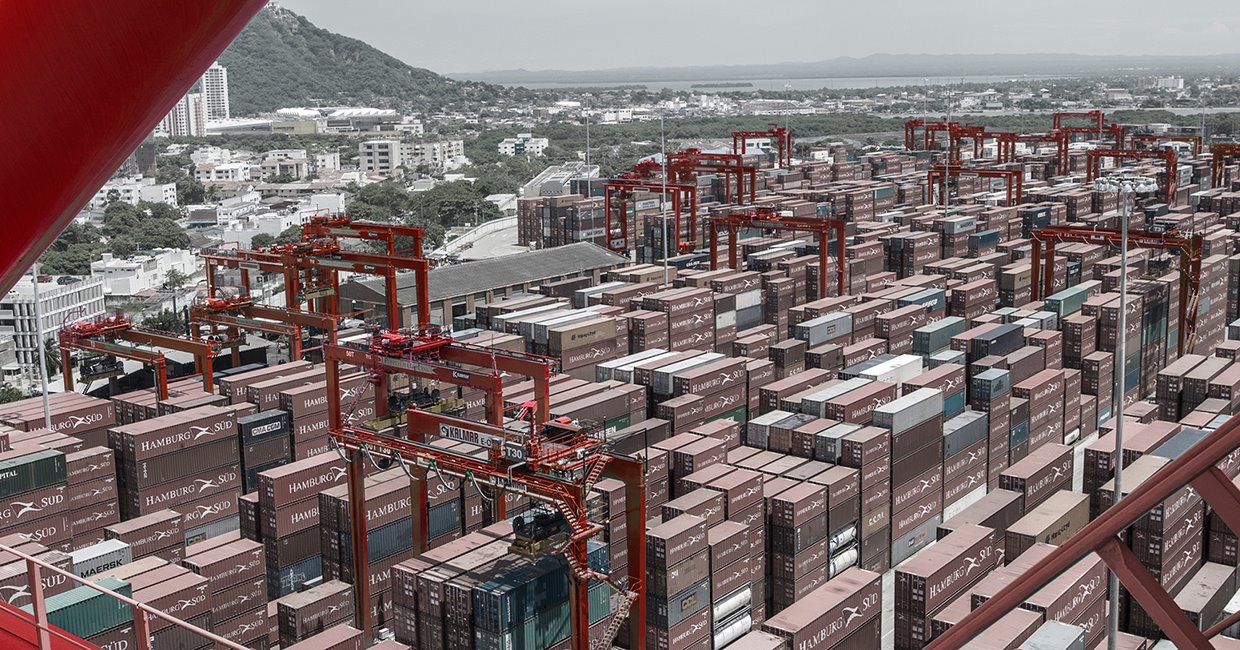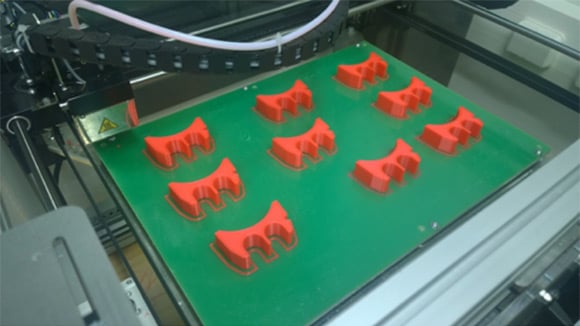
How is 3D printing going to impact the container handling business?
3D printing is expected to change manufacturing, consumer behaviour as well as transportation and logistics chains. Are we in a position to just follow while the world around us is at the edge of a change?
There has been steady progress since the previous 3D printing related post on this blog. There has not been a revolution, but there are plenty of interesting examples of new developments in this area.
Metal 3D printing, bigger capacities
Who are entering industrial 3D printing business? Very recently there has been interesting news:
Michelin, the tyre company, has announced development of metal 3D printers in a 25 M€ joint venture. The goal is to develop printers and production shops on a global scale and to “become a key player in metal 3D printing.”
Also, the titanium 3D printing company Norsk Titanium plans to open a 200,000-square-foot plant that they deem the “world’s first industrial-scale 3D printing facility”.
Similar news about new metal 3D printing facilities and factories are announced almost weekly on all continents. At the end of September, Materialise published the plan to open a metal 3D printing factory in Bremen, Germany.
Not only the production facilities and resources are growing, but also the 3D printers are growing in size and production capacity. The biggest 3D printed objects are houses. The largest machine at the moment can 3D print an entire house from concrete with the size of 2500 cubic meters. The biggest metal 3D printing machine, currently, can produce parts up to 4 cubic meters. (Source: http://3dprintingindustry.com/2015/08/19/top-10-largest-3d-printers/)
Price and speed limit expansion
Industrial 3D printing has two main limitations for becoming mainstream: price and speed. The prices of printers are coming steadily down. A good production system for metal printing, including devices and software, costs roughly the same as a new tractor for a farm. The speed is a tougher problem to be solved due to the complexity of the printing process management. However, companies having experience on mass volume printing business, such as HP and Seico Epson, have announced that they will solve these problems with their experience on printing technologies and IPR.
In March 2015, Carbon 3D published a breakthrough innovation with a new approach. They demonstrate 25–100 times faster 3D printing times than competitors. Carbon 3D can print complex objects within minutes instead of hours or days. In August they raised a 100M€ investment with Google Ventures to develop the solution.
Concrete examples of progress
Concrete examples of recent progress include test drive of complete 3D printed car, 3D printed chocolate bars, 3D printed sneaker prototypes that speed up Adidas design process and allow the test user to test the shoe in the early phase of the design process. VTT Technical Research Centre of Finland Ltd and Nurmi Cylinders Oy co-developed a cost-efficient, 3D printed, reliable hydraulic valve block that is 66% lighter than the original part.
Maybe the most interesting example is the recent launch of 3D printing of maritime spare parts in Rotterdam. That is already very close to the container shipping business.

Kalmar Technology and Competence Centre in Tampere, Finland is using 3D printing for fast prototyping to save time in the design phase, in the verification of functionality and compatibility of shapes, as well as for design visualisation. Image shows 3D printed hose fasteners for hydraulic cylinder.
What might the future look like?
The richest companies and countries are currently investing huge amounts of money to the development, seeking new business opportunities. The future will bring extraordinary 3D printing capabilities and applications to industry, society and individuals. It is impossible to foresee what they exactly are, but we know the laws and principles that the development follows:
- Technology will develop and improve. The solutions will look very different from today. Just think of the evolution of Internet from Gopher to the Internet of Things and from mainframe computers to connected sports gadgets.
- Digitalisation leads to global and connected activities, better user interfaces and fast innovation brokering. And whatever we do with 3D printing, it is about digitalisation, based on bytes, services, software, systems and 3D models.
- Logistics will change. Objects can be produced everywhere. As long as we have standardised or identical devices, the location or availability of human talent does not matter. Imagine a 200,000-square-foot 3D printing plant which is simply replicated in several locations.
- Disruptions are evident. Google took over a big part of Internet very fast and most of us rely on their services every day. They disrupted or changed the way how Internet is used. What will be disrupted by 3D printing and by whom?
- Business models keep on evolving in industries, consumer markets, subcontracting, partnering, and recycling, to mention a few.
- Innovation cycles will be faster. 3D printing is the perfect, cost efficient tool for ideation, iteration, improvement, and all other phases we need to make good products.
Communities of 3D printing, both local and global, will flourish and speed up the adoption by shared resources and knowledge.
Shifting transport paradigms
The IBM report on shifting transport paradigms suggests various scenarios for the impact of 3D printing on the global transportation industry, that is, freight logistics, container shipping, rail, and express shipping. If the development continues as today, the impact on the transportation industry is expected to be limited. Otherwise the impact is expected to be moderate or transformative, depending on the adoption level of 3D printing by consumers, print shops and manufacturing.
The impact for overseas container shipping may be
- Shift from finished goods to raw material transportation
- Shift from current overseas routes to routes from raw material sourcing nations to industrialized markets
- Shift to transportation of semi-processed raw materials or 3D printing cartridges in between continents.
Gopher enabled online collaboration and the next phase, WWW and Internet, changed the world in a radical way. This enabled Facebook to change the media business. Others follow: Uber is changing thee taxi business, Airbnb is changing the accomodation business, and so on.
Who will be the entrant impacting container handling business by utilising 3D printing and digital business models? Do not forget to think about what kind of new value and new services we can create for business and consumers. Maybe you are the radical new player?
This article was co-authored by Jari Hämäläinen, Director Offering Development at Kalmar with Pekka Ketola, CEO at ideascout. Pekka has 20 years of experience in user centred development, new technology adoption, product innovation and co-creation. He runs 3D Printing Academy in the Tampere business region.
Related articles
Further reading
External resources
Subscribe and receive updates in your email
Suscríbase a nuestras publicaciones

